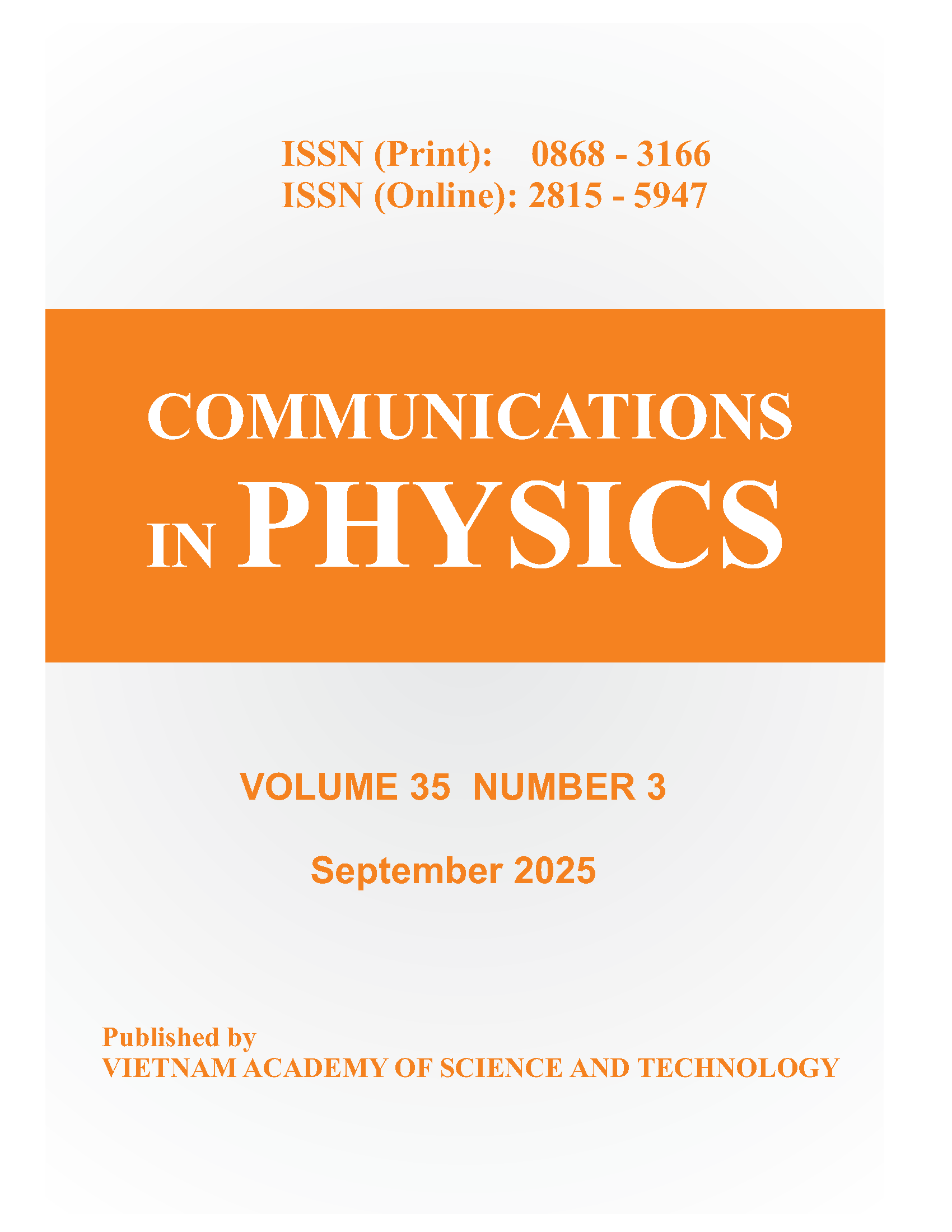Removal of Rhodamine B Dye by Plasma Jet Oxidation Process
Author affiliations
DOI:
https://doi.org/10.15625/0868-3166/15558Keywords:
cold plasma, plasma jet, oxidation, organic dye removal, Rhodamine BAbstract
Recently, nonthermal atmospheric pressure plasma has been developed as a novel tool in removal of water pollutants. Rhodamine B dye, widely used in textiles and biology, is toxic to both humans and animals, hence removing residual Rhodamine B in solution is necessary. In this work, we have setup a cold plasma jet system and used it to effectively remove Rhodamine B in the solution. We have shown that the main oxidation substance responsible to remove Rhodamine B is the hydroxyl radical (•OH). By studying the effect of the hydrogen peroxide (H2O2) concentration in the initial and later was produced in the solution, the plasma power, and the Ar gas flow speed on the dye remove rate, we have identified 2 main reaction pathways to generate hydroxyl radical (•OH). Both of these reaction pathways involve high-energy electrons interacting with water and O2 in the solution and in the ambient air. Our work provides important information to understand the mechanism of dye removal by cold plasma treatment.Downloads
References
Jain, R., et al., Journal of Environmental Management 85 (2007) 956-964.
Tariq, M., et al., J. Mol. Liq. 312 (2020) 113399.
Victor Odhiambo, S. and N.N. Wilfrida, Advanced Oxidation Processes for Dye Removal From Wastewater, in Impact of Textile Dyes on Public Health and the Environment, W. Khursheed Ahmad, J. Nirmala Kumari, and B. Ajmal Rashid, Editors. 2020, 205-238.
Iervolino, G., V. Vaiano, and V. Palma, Sep. Purif. Technol. 215 (2019) 155-162.
Muruganandham, M. and M. Swaminathan, Dyes and Pigments 62 (2004) 269-275.
Daneshvar, N., et al., Desalination 230 (2008) 16-26.
Cuiping, B., et al., Desalination 278 (2011) 84-90.
Chen, Y., et al., Environmental Science and Pollution Research 21 (2014) 9948-9958.
Attri, P., et al., Sci Rep-Uk 5 (2015) 9332.
Mukthar Ali, M., J.S. Arya Nair, and K.Y. Sandhya, Dyes and Pigments 163 (2019) 274-284.
Ding, X., et al., Chemosphere 253 (2020) 126655.
Hong, Y., et al., IEEE Transactions on Plasma Science 41 (2013) 545-552.
Nguyen, L.N., et al., Green Chemistry - Accepted manuscript (2020).
Dojčinović, B.P., et al., J. Hazard. Mater. 192 (2011) 763-771.
Buxton, G.V., et al., J. Phys. Chem. 17 (1988) 513-886.
Manoj Kumar Reddy, P., et al., Chem. Eng. J. 217 (2013) 41-47.
Downloads
Published
How to Cite
Issue
Section
License
Communications in Physics is licensed under a Creative Commons Attribution-ShareAlike 4.0 International License.
Copyright on any research article published in Communications in Physics is retained by the respective author(s), without restrictions. Authors grant VAST Journals System (VJS) a license to publish the article and identify itself as the original publisher. Upon author(s) by giving permission to Communications in Physics either via Communications in Physics portal or other channel to publish their research work in Communications in Physics agrees to all the terms and conditions of https://creativecommons.org/licenses/by-sa/4.0/ License and terms & condition set by VJS.











